Welcome to another edition of Coasters-101, the series where we teach you all about roller coaster design. There is something quite remarkable about being able to defy gravity and part of the charm of roller coasters is that they let you do exactly that. The vertical loop is one of the most common yet thrilling elements found in steel roller coasters. Very few feelings can match the excitement of dangling upside down at a great height without falling out!
Early roller coaster loops, including the first one, a 13-footer built in 1846 in Paris, were simple circles. The circular shape of the loops lead to a huge difference in g-forces at the bottom of the loop compared to the top. To make it all the way around without being pulled off at the top by gravity, coaster cars hit the circle hard and fast, shoving rider’s heads into their chests as they changed direction with a sudden snap that occasionally broke bones.
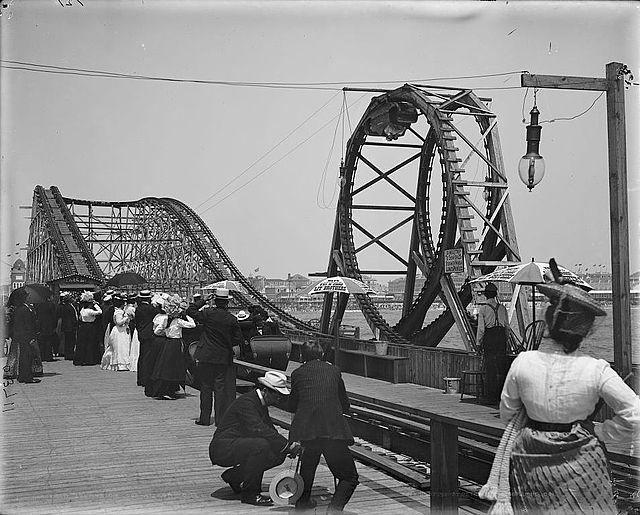
Looping the loop, Atlantic City, circa 1901
The shape of the loop determines how much force is felt at any location along it. The intensity of the acceleration force is determined by the speed of the train and the radius of the track. At the bottom of the loop the acceleration force pushes the riders down in the same direction as gravity. At the top of the loop, gravity pulls the passengers down towards the ground, but the stronger acceleration force pushes upward towards the sky, keeping riders in their seats.
Roller coasters are forced through the loop by the track applying centripetal force to the cars. Centripetal force keeps an object moving in its circular path and is the same force that prevents water from falling out of a bucket that is swung upside-down on a string. The net force is the centripetal force where Fnet = m(V2/r). The normal force, exerted by the track, is the force felt by the passengers. At the top of the loop the force felt equation is changes because the centripetal force and the force of gravity point in the same direction.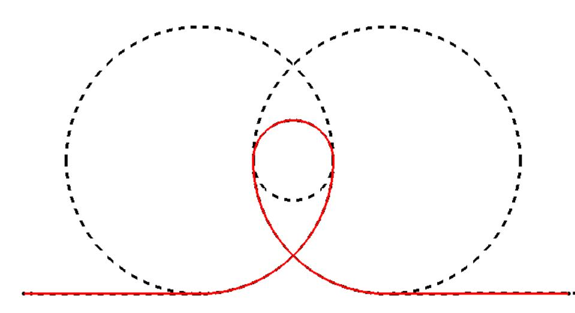
Using circles of different radii is better but still doesn’t solve all the issues. The disadvantages of circular loops are not limited to the maximum g-force at the bottom: entering the circular loop from a horizontal track would imply an instant onset of the maximum g-force, which could be an instantaneous g increase from 1 to 5 gs. The rate of g force onset or change is also important to consider to keep passengers safe.
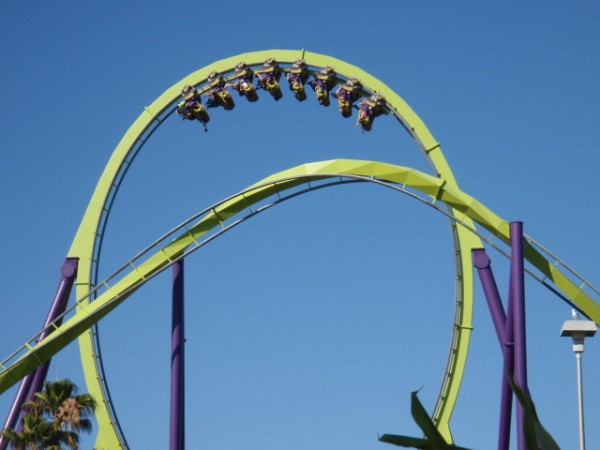
A modern vertical loop with varying radii
Vertical loops were finally made safe and comfortable in 1975 by Werner Stengel (of Stengel Engineering) with the teardrop shaped loop. He ditched the perfect circle and designed a loop with a radius of curvature that decreases as the vehicles are turned upside down. This way the g-forces at the top of the loop can be kept much closer to those of the bottom, resulting in a smooth and enjoyable experience. The decreasing radius of the track is designed using an Euler spiral or clothoid (or klothoide and pronounced ‘clockoid’) configuration. Clothoids are frequently used in railways, road building, and highway exits. A driver keeping constant speed in a clothoid segment of a road can turn the steering wheel with constant angular velocity; the Cornu spiral has the property of the radius of curvature being inversely proportional to the distance from the center of the spiral. While the upper part of the vertical loop could still be a half circle, the lower part has a completely different shape. It’s part of a “Cornu spiral”, where the radius of curvature increases as you get closer to the ground. Parts of clothoids are also used to connect parts of tracks with different curvatures. The clothoid shape leads to a slower onset of lower forces on the body, leading to a much safer ride for passengers (and no broken bones).
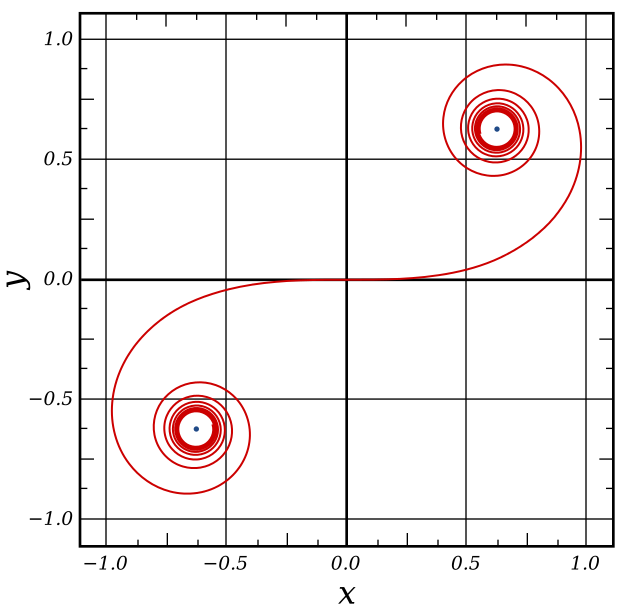
A Cornu spiral
The first roller coaster with a modern (clothioid) loop was Revolution at Six Flags Magic Mountain in 1976.
There are other methods using mathematical formulas to create safe loops including keeping constant centripetal acceleration, clothoid, and keeping a constant g force. Many loops are a mix and match of different formulas. Some manufacturers are known for specific kinds of loop and other inverting element shapes. Coaster elements are not patented or protected, and most are used widely among all manufacturers. If you want to get more technical on the physics and mathematical formulas used by roller coaster engineers in creating the perfect vertical loop, watch the YouTube video The Real Physics of Roller Coaster Loops by Art of Engineering (embedded below):
Ironically, some coaster manufacturers are now creating loops with more circular or elongated shapes to produce hangtime. Hang time is when a coaster vehicle is going through an inversion with just enough speed to not stall but not quite enough force to keep passengers in their seats, resulting in hanging against the restraints.
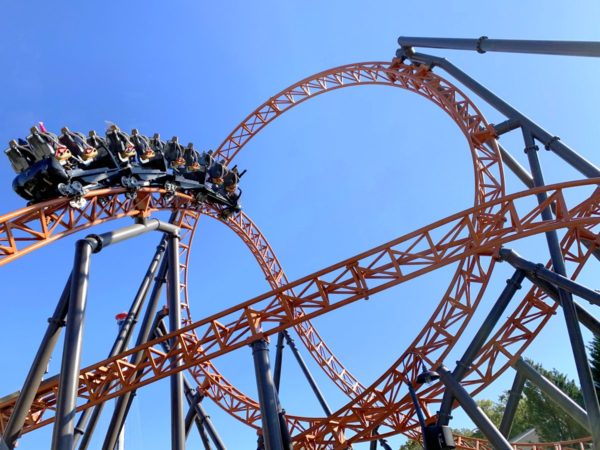
As of September 2022, there are four roller coasters tied for the world’s largest vertical loop at 160 feet (48.8 meters): Flash, Hyper Coaster, Do-Dodonpa, and Full Throttle. The world’s highest inversion above the ground is the 197 foot dive drop on Kennywood’s Steel Curtain. The most inversions in a track on a single coaster is The Smiler with an absurd 14.
To learn more about how coasters are designed check out Coasters 101: An Engineer’s Guide to Roller Coaster Design.

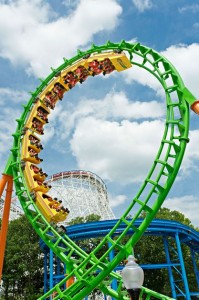
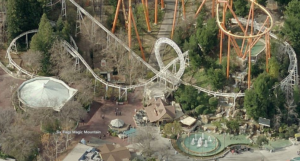
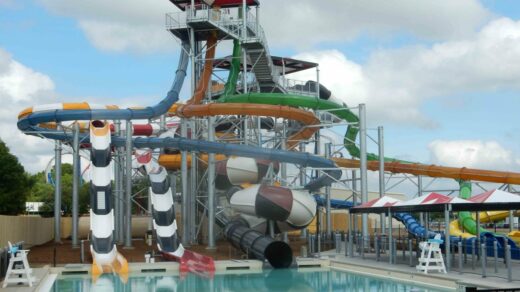
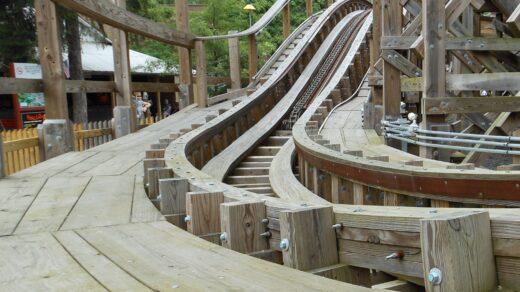











Generally, a good article. The force diagrams follow a confused tutorial, and should be corrected.
In the left force diagram, the normal force is depicted as the same magnitude as the gravitational force. This would give a net force of zero. The normal force is actually much larger than the gravitational force give a net force equal to the centripetal force. Since at the bottom the centripetal force (which is the same as the net force) is up toward the center of the circle, you feel heavy at the bottom of the loop.
In the right force diagram, the normal force is much less than the gravitational force, giving a net force (and centripetal force) being just larger than the gravitational force down, toward the center of the circle. You feel very light, almost floating off of the seat. If the normal force were zero, you would indeed be weightless at this point. If the lap bar is pushing upward on you, then the normal force would be upward, an undesirable design.
There is no requirement that the gravitational and normal forces be the same magnitude and cannot be the same magnitude if these are the only forces acting while there is a non-zero net force.
Thanks for the reminder, been meaning to update this again!